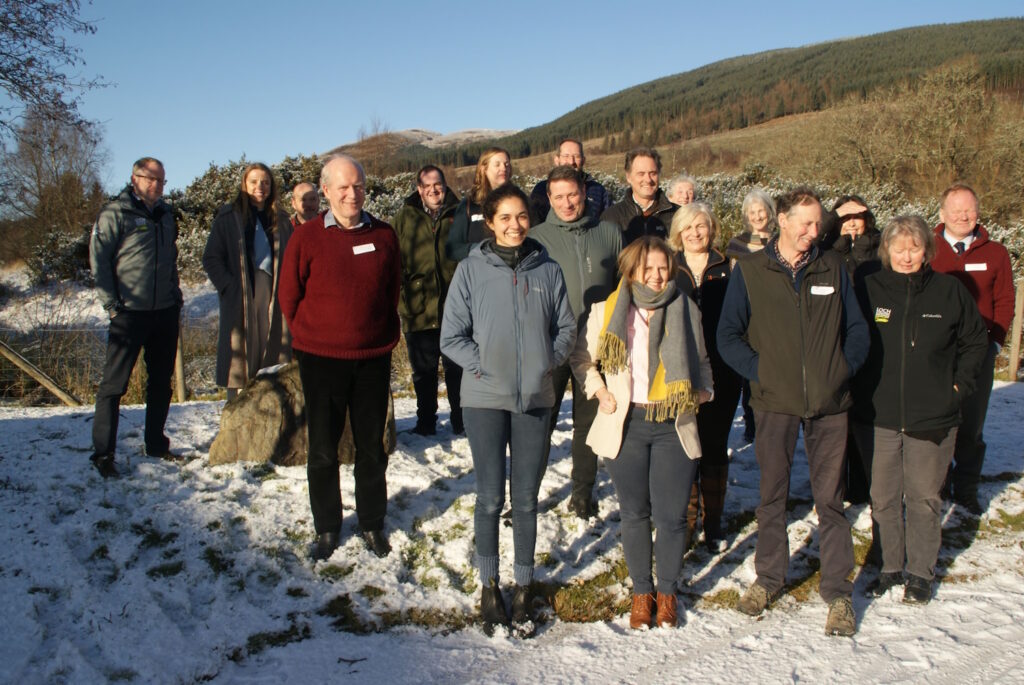Land collaboration in the spotlight at national park event
LANDOWNERS and managers within Loch Lomond and the Trossachs National Park came together to discuss good practices and help stimulate fresh thinking to ensure Scotland’s land is managed responsibly.
The event at Kinlochard Village Hall was hosted by the Scottish Land Commission, in partnership with Scottish Land and Estates and Loch Lomond and the Trossachs National Park Authority, featuring sessions and discussion around fairness, engagement and opportunities for land in Scotland.
It is the latest Scottish Land Commission event focusing on the Scottish Land Rights and Responsibilities Statement (LRRS) – a statement articulating the best practice and vision for the ownership, use and management of land, setting out how there should be a balance between the rights of landowners, managers, local communities and society at large.
Emma Cooper, Head of Land Rights and Responsibilities at the Scottish Land Commission said: “It is encouraging to have such positive engagement from significant landowners and managers in the national park in developing good practice. Each participant took time away from their usual activities to consider what responsible landownership looks like, demonstrating leadership and commitment to good practice.
The group of landowners and managers expressed their support for the principles of the LRRS. Insights were shared about practical good practices in community engagement and transparency and there was robust discussion about land reform legislation and voluntary approaches.”
The discussion focussed on routes to collaboration between landowners, land managers and communities – citing case studies from Luss Estates and Lochgoil Community Trust showing the mutual benefits that collaborative planning brings landowners and communities.
Sarah Madden, Policy Adviser (Rural Communities) at Scottish Land and Estates (SLE) explained why the event was useful for their members, “Land managers are often immersed in the practicalities and complexities of land and business management rather than the wider policy landscape, so this event was a fantastic opportunity to connect land managers with the Scottish Land Commission.
“The discussions around good practice in land management and the challenges that can arise in effective community engagement were hugely constructive and honest. It was particularly useful to hear from the fantastic case studies – a community strategy success story from a land manager’s perspective as well as the successes and challenges of managing a Community Trust in the park.
“Connecting these different perspectives is imperative for the formation of sound ideas and policy. SLE looks forward to continuing to work with the Commission and our members on the sharing of perspectives and finding solutions that benefit all of rural Scotland, so we can deliver even more for people, jobs and nature.”
This event was part of the Good Practice Programme of the Scottish Land Commission, which works to align ownership and management of land with the principles of the LRRS. This is done in rural and urban contexts across all sectors and types of landownerships and management – including public, private and community bodies.
Dominic Hall, Future Nature Development Manager at Loch Lomond and the Trossachs National Park Authority said: “Our New National Park Partnership plan lays down an ambitious vision for a nature-positive, carbon-negative, thriving place. Our land managers will be key in delivering that and so we’re delighted to have been involved in a hugely positive day which demonstrated how engaged land managers and communities are in working together to meet this challenge and deliver a thriving place for all.”
The Scottish Land Commission seeks to support the development of good practice through guidance, resources, training, and casework, as well as the facilitation of discussion to aid joined-up thinking and mutual understanding on land issues.
The public body’s vision is that the ownership and use of land supports thriving people and places.
The Scottish Land Commission provides advice and recommendations for reforms to law and policy as well as leadership for change in culture and practice, working to create a Scotland where everybody can benefit from the ownership and use of the nation’s land and buildings.
To find out more about the Scottish Land Rights and Responsibilities Statement, please visit Scottish Land Rights and Responsibilities Statement 2022 (www.gov.scot)
To find out more about the Scottish Land Commission, please visit https://www.landcommission.gov.scot/
